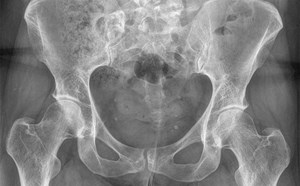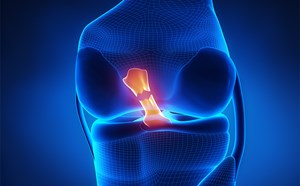
An Interesting Case
You’re on morning shift, the ED is relatively quiet, and the first patient is a 35 year old complaining of unilateral shoulder weakness. However, it has been steadily going on for the past few months and it’s gotten to the point he is unable to use his dominant arm to reach up for the Cocoa Puffs in the pantry. This is secondary to both weakness and pain. How do you evaluate this patient?
Your evaluation begins with a history. He has had progressive weakness, but it does not change throughout the day or with activity. No trauma or infectious symptoms. No significant past medical, surgical, or social history. He cannot provide a family history since he was adopted.
His exam shows some atrophy and weakness of the affected shoulder when compared contralaterally. No bony, joint or bursa tenderness. He has full passive ROM, but hikes his shoulder on the right with active ROM.
Differential diagnosis:
- CVA
- Rotator cuff injury
- Suprascapular neuropathy
- Parsonage-Turner Syndrome
- Myasthenia gravis
- Guillain-Barre variant
- Cervical radiculopathy
- Distal myopathy / dystrophy
- Multiple sclerosis
- Brachial plexopathy
- HNA-Hereditary neurologic amyotrophy
Your laboratory workup comes back negative. X-ray of the shoulder and C-spine are without acute osseous abnormality. MRI Brain comes back negative. Your NIF is > 20.
You ultimately discharge him to follow up with sports medicine where he is ultimately diagnosed with facioscapulohumeral muscular dystrophy (FSHD).
Although FSHD is not a diagnosis made in the ED, just being aware of it is important. If you practice in a sports medicine clinic, this should be on your differential for those presenting with scapular dyskinesia.
Facioscapulohumeral muscular dystrophy is the third most common dystrophy and is typically autosomal dominant. 1 in 15,000 to 20,000 Caucasians are affected.1 The disease typically manifests as a gradual progression of descending weakness - it starts with facial weakness (often mild and asymptomatic), followed by scapular fixators, humeral, truncal, foot dorsiflexors, and then lower-extremity weakness.1–3 The most common initial symptom is difficulty with reaching above shoulder level related to weakness of the scapular fixators. The severity of the disease varies as does the onset of the disease. Onset can vary from early infancy to the late fifties. Of note, in 1950, an article described a population from Utah of 1,249 across 6 generations that came from one affected individual in 1840. Of the 240 members, 58 of them were affected.2 It is the first report that confirmed the autosomal dominant inheritance pattern and clinical variability of FSHD.
Clinical criteria in 19914:
- Onset of disease in the facial or shoulder girdle muscles AND sparing of extraocular, pharyngeal, and lingual muscles and myocardium
- Facial muscle weakness in more than 50% of affected family members
- Autosomal dominant inheritance in familial cases
- Evidence of myopathic disease from electromyography and muscle biopsy in at least one affected member, without biopsy features specific for alternative diagnoses
Since these criteria were released, several reports have described myocardial involvement2 that call into question the validity of the strict criteria. Extramuscular manifestations of FSHD include cardiac, pulmonary, retinal, and otologic. Instead of the 1991 criteria, an algorithm was suggested by Tawil et al:
Diagnostic flowchart for FSHD sourced from Tawil1

The treatment for FSHD itself has only controversial results. Albuterol, corticosteroid, and diltiazem have all shown no benefit.1 A myostatin inhibitor, MYO-029 did not show benefit. NSAIDs can be used for acute pain, antidepressants and anti-epileptics for chronic pain. Surgical scapular fixation may be beneficial for a select group of patients with FSHD that can tolerate the surgery, postsurgical bracing, and stand to gain from the increased range of motion.1 Low-intensity aerobic exercise and guided physical therapy strengthening programs is recommended.1 A study recently demonstrated that, almost counterintuitively, high-intensity training may be a feasible method for rehabilitating patients with FSHD.5
Screening is recommended for patients with FSHD – baseline pulmonary function tests for all, retinal for those with large deletions, and hearing for younger patients < 10 years old. Unfortunately, despite the diligence of the research community to find a treatment or cure for this disease, there is no significantly beneficial therapy for FSHD – yet.
References
- Tawil R, Kissel JT, Heatwole C, Pandya S, Gronseth G, Benatar M. Evidence-based guideline summary: Evaluation, diagnosis, and management of facioscapulohumeral muscular dystrophy: Report of the Guideline Development, Dissemination, and Implementation Subcommittee of the American Academy of Neurology and the... Neurology. 2015;85(4):357-364 8p. doi:10.1212/WNL.0000000000001783
- Pandya S, King WM, Rabi T. Facioscapulohumeral dystrophy. Semin Neurol. 2008;88(1):105-113. doi:10.1055/s-2008-1040824
- Corrado B, Ciardi G. Facioscapulohumeral distrophy and physiotherapy: a literary review. J Phys Ther Sci. 2015;27(7):2381-2385. doi:10.1589/jpts.27.2381
- Padberg GW, Lunt PW, Koch M, Fardeau M. Diagnostic criteria for facioscapulohumeral muscular dystrophy. Neuromuscul Disord. 1991;1(4):231-234. doi:10.1016/0960-8966(91)90094-9
- Andersen G, Heje K, Buch AE, Vissing J. High-intensity interval training in facioscapulohumeral muscular dystrophy type 1: a randomized clinical trial. J Neurol. 2017;264(6):1099-1106. doi:10.1007/s00415-017-8497-9
- Martin RM, Fish DE. Scapular winging: Anatomical review, diagnosis and treatments. Curr Rev Musculoskelet Med. 2008;1(1):1-11. doi:10.1007/s12178-007-9000-5
William Denq, MD


